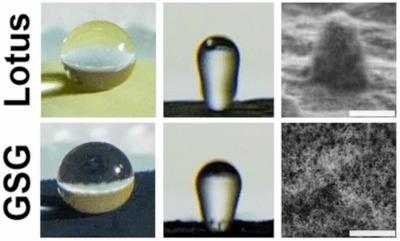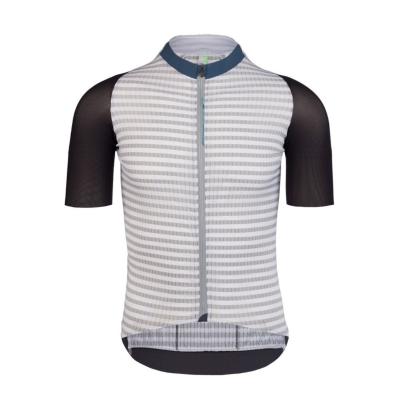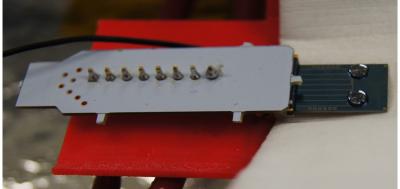The Graphene-Info weekly newsletter
Published: Tue, 05/17/22
The Graphene-Info newsletter (May 17, 2022)
Cannot read this? View it online here
Researchers discover unique water-repellent graphene
Researchers at the Harvey Mudd College in the U.S have made an unexpected discovery that holds exciting potential for creating robust water-repellent coatings using gas-phase-synthesized graphene (GSG) and other nanomaterials.

Last summer, the researchers were working on two projects: A National Science Foundation-funded project characterizing nanocomposites and a project supported by the College’s Rasmussen Summer Research fund that involved using graphene to separate oil from water. “While working on these projects, the students discovered that water droplets falling on our graphene powder were easily sliding off and bouncing from it,” says Albert Dato, author of the paper. “This was a completely unexpected result since we weren’t even looking into this phenomenon called superhydrophobicity.”
Q36.5 launches graphene-enhanced cycling clothes
Q36.5, producer of advanced cycling clothing, has launched a line of bike shirts made of yarn that integrates graphene in the fabric (rather than using the material as a treatment).

The "Clima Jersey" line is said to be made from a polyester fabric infused with graphene, and takes advantage of graphene’s conductive and heat dissipation properties to provide cutting edge thermoregulation, helping the wearer to stay cool and dry during hard efforts.
Researchers develop a graphene platform for extra sensitive detection of viral proteins
Scientists at Swansea University, Biovici Ltd and the National Physical Laboratory have developed a graphene-based method to detect viruses in very small volumes.
 Graphene device chip attached to an electrical connector, with two 5 μL HCVcAg samples (one applied on each graphene resistor). Image credit: Swansea U
Graphene device chip attached to an electrical connector, with two 5 μL HCVcAg samples (one applied on each graphene resistor). Image credit: Swansea U
The work followed a successful Innovate UK project developing graphene for use in biosensors – devices that can detect tiny levels of disease markers.
Graphene assists in taking a step toward ultrafast computers
Researchers at the University of Rochester and the Friedrich-Alexander-Universität Erlangen-Nürnberg (FAU) have demonstrated a logic gate—the building block of computation and information processing—that operates at femtosecond timescales. The feat was accomplished by harnessing and controlling the real and virtual charge carriers that compose these ultrafast bursts of electricity.
The researchers have opened the door to information processing at the petahertz limit, where one quadrillion computational operations can be processed per second. That is almost a million times faster than today’s computers operating with gigahertz clock rates, where 1 petahertz is 1 million gigahertz.
HydroGraph announces plans for commercial scale production
HydroGraph Clean Power has announced that it is targeting Q3 2022 for commercial scale production at its Manhattan, KS manufacturing plant. To do this, the Company will be leveraging manufacturing technology developed at Kansas State University and kicking off a five-year plant expansion and job creation plan for the Manhattan region.
HydroGraph technology manufactures graphene and other materials, using its technology — the Hyperion detonation system — that is reportedly "ideal for commercial scale: compact and modular, with the small footprint allowing for deployment virtually anywhere". The Company’s initial go-to-market product of graphene, with hydrogen production process in development, marks the beginning for a platform of products in the advanced materials and energy spaces.
Skeleton Technologies announces agreement with ZPUE to provide supercapacitors to the Polish market
Skeleton Technologies and ZPUE, the largest manufacturer of electrical devices for electrical power distribution utilities in Poland, have entered into a commercial agreement to provide energy storage solutions to the Polish market.
The two companies signed a Letter of Intent under which Skeleton should supply supercapacitors for rail wayside storage at 200 MW per year from 2023 to 2025.
Versarien's graphene revenues grew 170% in the past year
Versarien announced its latest financial results. The company reports increased interest from global companies, with an increase in revenues and a drop in net loss.
In the year that ended on March 2022, Versarien's revenues grew to £7.6 million, up from £5.7 million a year ago. The group's graphene revenues grew by 170% to £1.9 million. The company's operating loss decreased to £1.04 million (down from £1.88 a year ago). Versarien reported it had £3.1 million in cash and equivalents at the end of the quarter.
Reduced graphene oxide enables stretchable strain sensor for monitoring of physical activities
A new work by scientists at India's National Institute of Technology Rourkela describes the fabrication of extremely flexible, accurate, and robust strain sensors employing electrochemically produced reduced graphene oxide (rGO).
Conventional silicon-based strain sensors have relatively low flexibility of less than 5% and inadequate responsiveness, making them unsuitable for detecting both small and large strains. Aside from the flexibility constraint, typical silicon-based strain sensors need sophisticated manufacturing procedures such as microelectromechanical and deposition of thin films. Flexibility, responsiveness, and endurance are critical characteristics of wearable devices because they aid in the integration of the sensors over non-uniform interfaces such as the human body. Aside from elasticity, these products also need a sensor capable of detecting minute deformations caused by physiological factors and physical activity.




